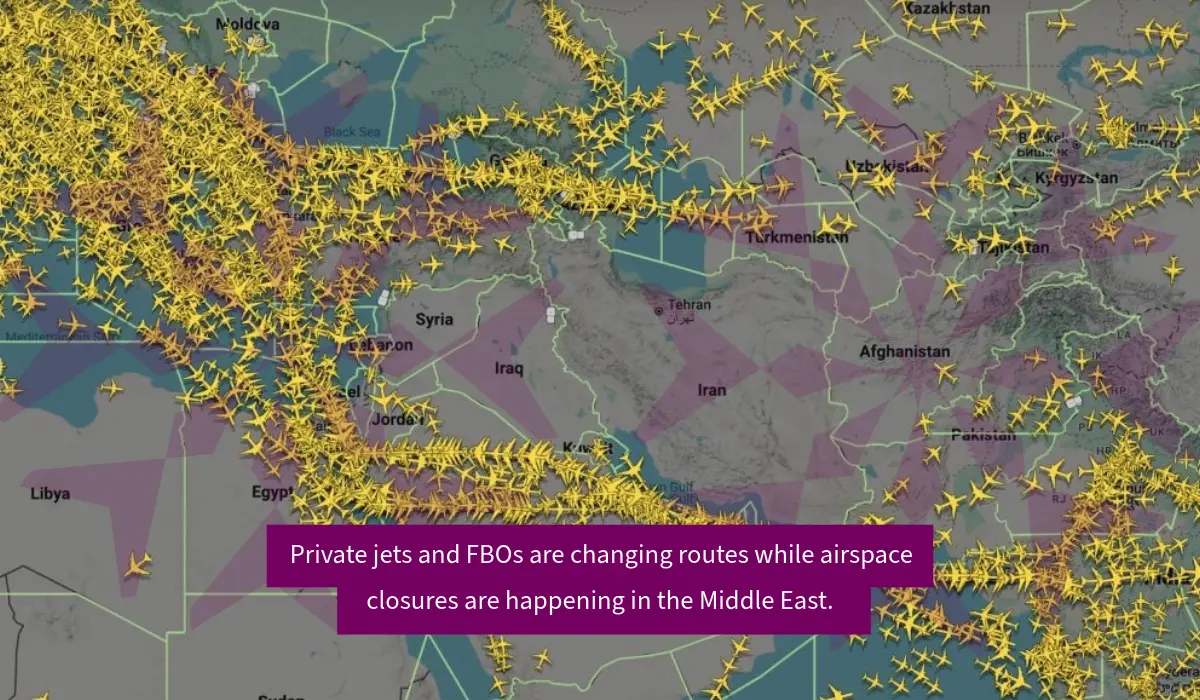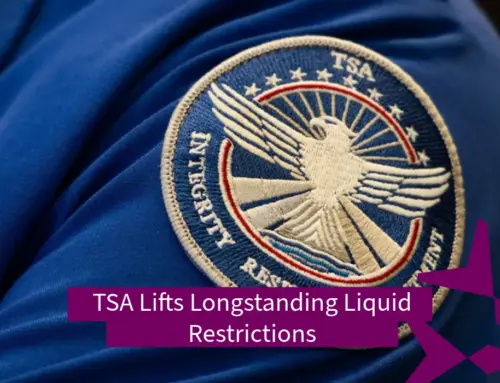Private jets and FBOs are changing routes while airspace closures are happening in the Middle East.
Date: June 16, 2025
By JetMate Aviation
The escalating conflict between Iran and Israel has led to sweeping airspace shutdowns across Iran, Israel, Iraq, Jordan, and Syria. This disruption hasn’t only grounded commercial airlines—it’s forced private jet operators and fixed-base operators (FBOs) to recalibrate entirely.
1. Airspace Blackouts: A Regional No-Fly Zone
Following Israel’s strikes on Iranian military and nuclear sites on June 13, all affected countries declared Level 1 “Do Not Fly” alerts for civilian and private aviation . These shutdowns have rerouted private jets far beyond conventional corridors, reshaping long-haul itineraries.
2. Emergency Diversions to Safe Zones
Operators are diverting flights away from the Middle Eastern theater via safer airspaces—routing through Egypt, Turkey, Cyprus, Greece, and Malta before reconnecting with standard routes. One private Manila‑to‑Cuba flight reportedly flew via Egypt and Malta, even freighting across Morocco to avoid conflict zones .
3. FBOs Step Up as Tactical Lifelines
Facilities in Cairo, Ankara, Riyadh, and Abu Dhabi are playing critical roles:
-
Fueling & hangars: A surge in activity is straining fuel resources and ramp space.
-
Crew & passenger support: Extended layovers demand overnight accommodation and ground logistics.
-
Intelligence coordination: FBOs, leveraging flight-risk platforms like Safe Airspace, are guiding rerouting strategies
One prominent regional FBO, Jetmate, is reportedly handling intensified support services due to the closure of neighboring airspaces
4. Operational & Financial Aftershocks
-
Extended flight profiles: Longer distances drive fuel bills and overflight charges.
-
Slot & crew disruptions: Duty time limits and hotel logistics are complicating schedules.
-
Insurance implications: War-risk premiums have spiked; ignoring NOTAMs can nullify coverage
5. Safety Culture & Pilot Autonomy
Amid fears of misidentification and missile risk, private pilots are increasingly empowered to refuse flights unless safety is guaranteed. This shift follows commercial aviation trends where crew safety protocols have tightened .
6. Long-Term Shifts in Private Aviation
Experts predict enduring changes, including:
-
Diversified routing with built-in detours into non-risk zones
-
FBO expansion in geopolitically stable hubs like Egypt and Turkey
-
Enhanced real-time intelligence sharing across operators
-
Revised insurance contracts reflecting comprehensive war-risk scenarios
-
Redistributed aircraft positioning, reducing exposure to conflict regions
Airspace closures triggered by the Iran–Israel conflict have created complex rerouting challenges for private aviation. FBOs are emerging as vital support networks, while operators face elevated cost, logistical, and safety pressures. The sector appears poised for structural evolution—emphasizing resilience, intelligence-driven planning, and risk mitigation.







